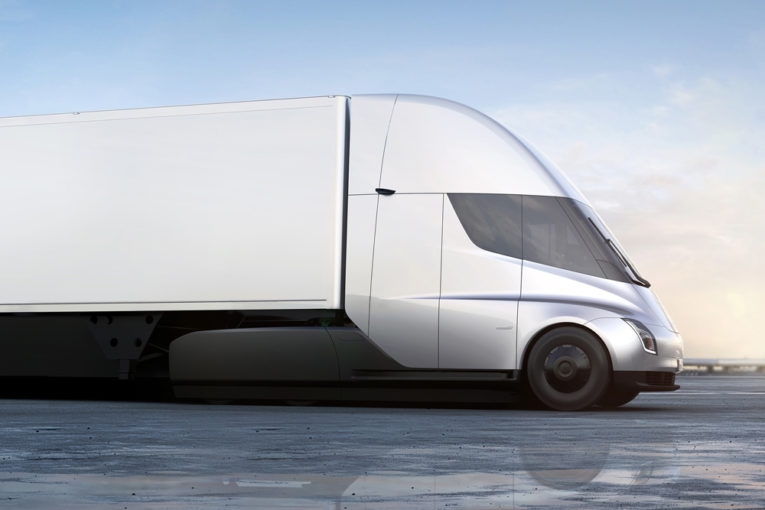
Not long ago, the idea of 18-wheelers pulling cargo with a battery seemed somewhat ludicrous to me. But I’ve changed my mind.
In fact, I would argue that electrically powered wheels may come to the trucking market faster than the world of passenger cars.
The reason is simple. Trucking companies — like any capitalist, profit-maximizing institution — make rational purchase decisions based on careful assessments of economic viability. Any capable Chief Financial Officer is algorithmically brain-wired to ask, “Is this thing going to make our company any more money?” If the answer is “yes,” the switch is often fast.
Individuals on the other hand are often motivated by soft sell factors like vanity, size and flexibility, not to mention instant convenience. A good set of cup holders often trumps fuel economy. The option to haul a sheet of plywood on a moment’s notice, if only twice a year, is perceived as worth the cost of supersizing a vehicle purchase.
Personal transport choices have long been incompatible with making good financial decisions (I can validate that fact personally). Yes, I know that new money saving modalities like ride-sharing are redefining the way some people move around, but there is more of the vehicle world to take on than just Manhattan and Berlin.
But let’s get back to thinking about changing the face of the trucking business. Can we think of a historical analogy that helps us consider whether an electric truck will gain favour over a tried-and-true diesel? The criteria for comparison are: (1) both old and new systems must be on wheels; (2) the energy source is changing; (3) the propulsion method that drives the wheels is changing; and, (4) the procurement is being driven by business decisions.
The closest example I can think of is railroad locomotives; the transition from coal-fired steam boilers to petroleum-powered diesel engines. Because of superior performance, the substitution away from big iron horses was fast, meaningfully starting in the 1940s and ending with complete obsolescence by the early 1970s. “Fast,” however, still translated into three decades.
Our chart this week shows the rate of diesel locomotive adoption over time, which followed a typical S-shaped pattern. Looking at the data, the 30-year transition happened at a much faster pace than any current analyst projection for personal electric vehicles. In fact, it happened faster than the extreme hypothetical scenario under which the sale of all internal combustion engines is globally banned by 2040 (see my column from October 16th).
A diesel locomotive had compellingly better utility over its steamy predecessor. The engineer didn’t have to waste time stopping at water towers to fill up the boiler. Nor was there a need for a tender car and a guy in black overalls to shovel coal into a fire-box. Everything was superior: range, power and control. All put together it meant greater productivity, lower operating cost and an ear-to-ear grin on the CFO’s face.
In fact, if you were a railroad operator still running steam engines in the mid-20th century, you were probably headed toward bankruptcy. Your competitors with shiny new diesel equipment would have been stealing customers with better service and lower prices for hauling goods.
And that’s the thing in the business world that drives faster transitions to newer products and processes: the threat of being uncompetitive, or outright bankruptcy. It’s a powerful force for change.
As a side note, households don’t often feel that force. Do you feel competitive pressure to buy an electric vehicle over gasoline? For most individuals, competition means keeping up with the Joneses, which often leads to irrational financial decisions.
Within the trucking business, Tesla, Cummins and several other manufacturers are in the fray to build the next generation. But it’s still too early to tell how the pros, cons and dollars stack up. Over the next couple of years, CFOs will be grinding spreadsheets to see if electrified trucks make financial sense. Lower energy and maintenance costs, as well as the promise of efficiency gains by virtue of autonomous driving technologies, tells me there is significant potential for electric propulsion in trucking. I think some niches are likely to haul change in the near future. Within the heavy-duty vehicle (HDV) market I’ll put my money on step vans first – the type that blocks a city road when delivering my Amazon order.
Several companies with trucking fleets have pre-ordered the Tesla Semi in small quantities, already signalling an interest. However an important cue will be when the first big trucking company starts making the switch. That will mean there is money to be made. And when this happens the train will have left the station.
You can read more of the news on source
